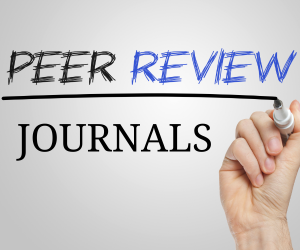NORMAL AND ABNORMAL BLOOD COAGULATION: A SYSTEMATIC REVIEW
Keywords:
Blood Coagulation, Fibrinogen, Hemostasis, ThrombocyteAbstract
The coagulation route is a series of actions that ultimately result in the formation of hemostasis. The intricate process enables quick healing while also helping to avoid bleeding that could otherwise occur on its own. Both the intrinsic and extrinsic routes, which lead to fibrin activation, begin in different places but converge at the same site to produce the same result. The purpose of this procedure is to use a fibrin mesh to help stabilize the ends of the platelets. The mechanism of blood coagulation, which is responsible for maintaining hemostasis, is an intricate process that is carried out by a number of clotting factors. The components I, II, IX, X, XI, and XII are the ones that make up the intrinsic route. Fibrinogen, prothrombin, the Christmas factor, the StuartPrower factor, plasma thromboplastin, and the Hageman factor each have their own names. The variables I, II, VII, and X are the ones that make up the extrinsic route. The factor known as the stable factor is factor VII. The following elements make up the general pathway: I, II, V, VIII, and X. These components, in the form of zymogens, travel through the bloodstream, where they are eventually converted into serine proteases. The process of blood clotting is known as coagulation, and it requires and involves many different components and routes. Disorders that manifest in the organs or components that are essential to the coagulation process can be the root cause of coagulation issues.
References
Chaturvedi S; Brodsky RA; McCrae KR. Complement in the Pathophysiology of the Antiphospholipid Syndrome. Front Immunol. 2019;10:449.
Franchi T; Eaton S; De Coppi P; et al. The emerging role of immunothrombosis in paediatric conditions. Pediatr Res. 2019;86(1):19–27.
Panova-Noeva M; Eggebrecht L; Prochaska JH; et al. Potential of
Multidimensional, Large-scale Biodatabases to Elucidate Coagulation and Platelet Pathways as an Approach towards Precision Medicine in Thrombotic Disease. Hamostaseologie. 2019;39(2):152–63.
Luyendyk JP; Schoenecker JG; Flick MJ; et al. The multifaceted role of fibrinogen in tissue injury and inflammation. Blood. 2019;26(1):41–50.
Ganong F; William. Buku Ajar Fisiologi Kedokteran. 22nd ed. Jakarta: EGC; 2013.
Sherwood L. Fisiologi Manusia: dari sel ke sistem. 6th ed. Jakarta: EGC; 2011.
Guyton A, Hall J. Buku ajar fisiologi kedokteran. Jakarta: EGC; 2016.
Kaushansky K; Lichtman MA; Beutler E; et al. Williams Hematology. China:
McGraw-Hill Education; 2010.
Schmaier AH; Lazarus HM. Concise guide to hematology. West Sussex: WileyBlackwell; 2016.
Powell LD; CHung P; Baum LG. Hematology Basic Principles And Practice. 6th ed. Otawwa: Elsevier Saunder; 2013.
Habib A; Petrucci G; Rocca B. Pathophysiology of Thrombosis in Peripheral
Artery Disease. Curr Vasc Pharmacol. 2019;
Weitz JI. Coagulation Simplified. Am J Med. 2013;12(2):17–9.
Price SA, Lorraine MW. Patofisiologi Konsep Klinis Proses-Proses Penyakit. Jakarta: EGC; 2016.
Chaudhry R, Usama SM, Babiker HM. Physiology, coagulation pathways. 2018; 15. Palta S, Saroa R, Palta A. Overview of the coagulation system. Indian J Anaesth. 2014;58(5):515–23.
Periayah MH, Halim AS, Saad AZM. Mechanism action of platelets and crucial blood coagulation pathways in hemostasis. Int J Hematol stem cell Res.
2017;11(4):319.
Lam W, Moosavi L. Physiology, factor V. 2019;
James PD, Connell NT, Ameer B, Di Paola J, Eikenboom J, Giraud N, et al. ASH ISTH NHF WFH 2021 guidelines on the diagnosis of von Willebrand disease. Blood Adv [Internet] 2021 Jan 12;5(1):280–300. Available from: https://doi.org/10.1182/bloodadvances.2020003265
Robert F, Desroches-Castan A, Bailly S, Dupuis-Girod S, Feige J-J. Future treatments for hereditary hemorrhagic telangiectasia. Orphanet J Rare Dis. 2020;15:1–10.
Silva ED, Kim H. Thrombocytopenia : Focus on platelet apoptosis. Chem Biol Interact. 2018;284:1–11.
Sekhon S, Roy V. Thrombocytopenia in Adults: A Practical Approach to Evaluation and Management. South Med J. 2006 Jun 1;99:491–8; quiz 499.
Ramezanpour N, Zaker F, Biswas A, Dorgalaleh A. Inhibitor in congenital factor VII deficiency; a rare but serious therapeutic challenge—a systematic literature review. J Clin Med. 2021;10(2):211.
Downloads
Published
Issue
Section
License

This work is licensed under a Creative Commons Attribution 4.0 International License.
Licensing
Ninety Nine Publication publishes articles under the Creative Commons Attribution 4.0 International License (CC BY 4.0). This licensing allows for any use of the work, provided the original author(s) and source are credited, thereby facilitating the free exchange and use of research for the advancement of knowledge.
Detailed Licensing Terms
Attribution (BY): Users must give appropriate credit, provide a link to the license, and indicate if changes were made. Users may do so in any reasonable manner, but not in any way that suggests the licensor endorses them or their use.
No Additional Restrictions: Users may not apply legal terms or technological measures that legally restrict others from doing anything the license permits.





